I received a free copy of Spire: The City Must Fall from Isola Illyon Edizioni (which took care of the Italian version of this RPG) in order to write this review. If you are interested in purchasing the italian version of the product, you can do so at their online store at the price of €40 (price including physical copy and digital copy) or €20 (digital copy only). If you are interested in the original language version (English) you can find it at the Rowan, Rook and Decard online store.


Are you looking for something light and joyful?
Don’t go further.
As you will see in this review, Spire: The City Must Fall is not for you.
The world is dark and cruel, almost completely adrift from moral values. It can be divided into various areas, each exotic in its own way and governed by a different race: Dark Elves (Drow), High Elves (Aelfir), Humans, Gnolls… Each with its own traditions and society. But this RPG is not based on the exploration of wild lands, it will not introduce you to strange monsters and it will not even allow you to choose among all the races. All we need will be within a single city, Spire, but trust me: you will not find anything missing.
Spire: Review of a City Deeper than Many Worlds
Take some elements of the classic dark fantasy (primarily Dark Elves and High Elves), put them in a “dirty” and corrupted urban context; add punk elements, intrigue and a very strong dash of revolt. From this exotic and dangerous mix the city of Spire was born, the focus of this review and of the stories you are going to live!
How the city was born remains a mystery. There are many theories about it (a colossal creature, a relic of an ancient civilization, something extra-dimensional…), but none of these are reflected in extant texts or documents of any kind. Instead, what is certain its character is profound and immersive beyond belief. Its development is vertical, reaching for the sky. Nothing is trivial, each part of it has an evocative name, aspect and function: The Basilica of the Sun, the Ivory Quarter, the Hanging Gardens… And the more you explore, the more you realize how little you know about it!
It is a lively and pulsating place, full of secrets and hidden paths known only to those wily enough to survive them. There is no certainty or morality, even the concept of family provides no safe shelter. The city seeks stability, but not all of its inhabitants agree.
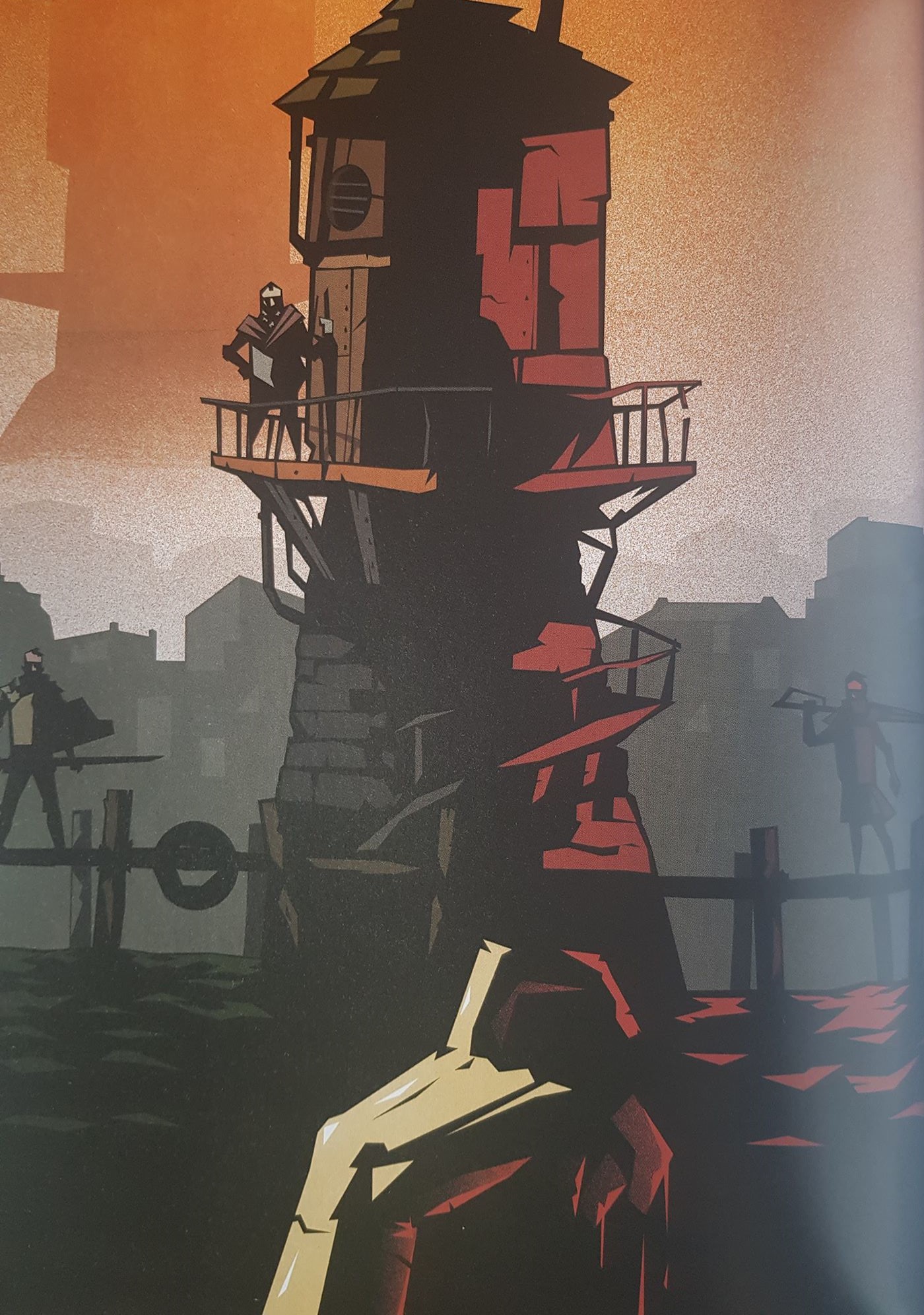
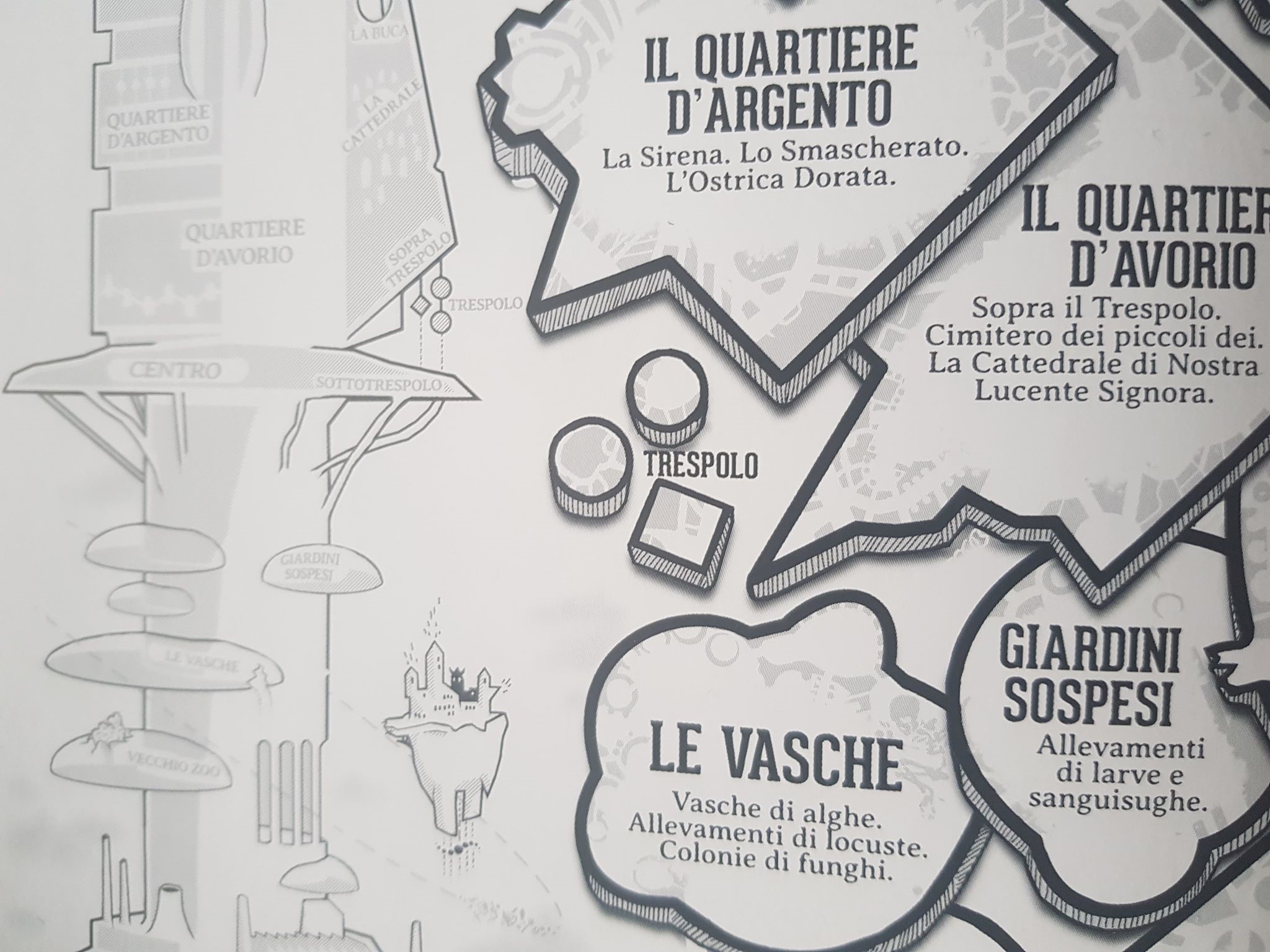
The Inhabitants are the Lifeblood (or Poison) of the City
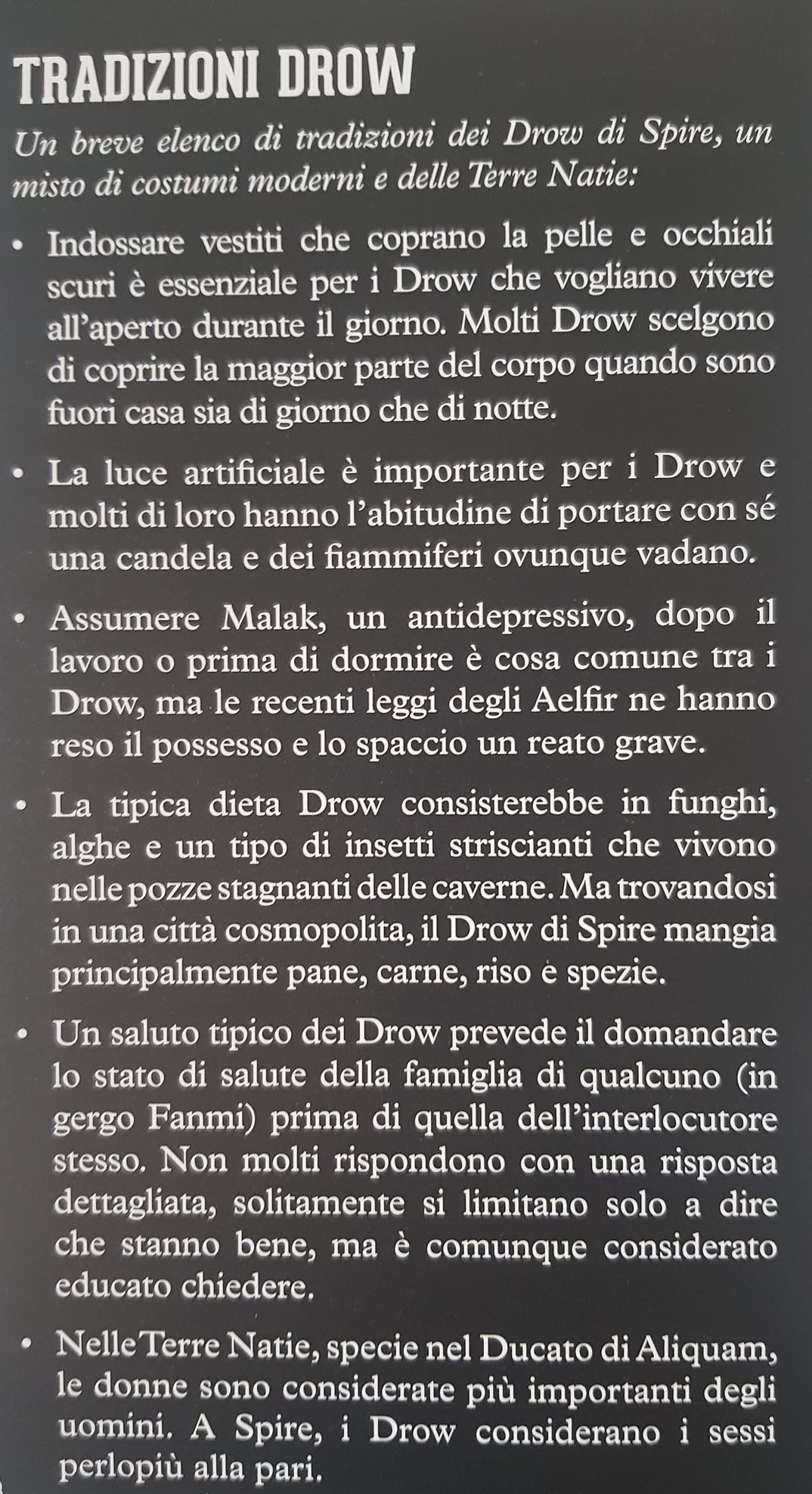
This city pulsates with energy mainly thanks to two of the ethnic groups that inhabit it: the Aelfir and the Drow. The former represent light, they are the oldest and the most related to the laws. Maybe because they are the law themselves. They rule Spire and treat the Dark Elves as inferior beings, perhaps because they spawned them through a curse. The Drow therefore grow in resentment towards the Aelfir. Their name reflects their tormented nature, which does not allow them to tolerate sunlight. Their life was born out of difficulties and this strengthens them, inducing them to rebel, to raise their heads in this urban jungle. But be careful, changing the situation too much attracts the attention of someone more powerful… And this often ends with the premature death of an aspiring revolutionary.
From here a game of intrigue and alliance arises. Few titles have dealt with this topic with the same depth as Spire: The City Must Fall. There are mechanics to describe power games; the text underlines the importance of watching your back.
Through all this, however, you should not lose sight of the dualism of light / shadow, which is also present in faith. The new and mysterious Our Veiled Lady is opposed to the official religion of Our Shining Lady. Dark, dangerous and unauthorized. Although free, occult magic is opposed to official divine magic. There are also other strange supernatural figures, but it is difficult to classify them in a similar context.
One thing is certain: Spire: The City Must Fall allows us to understand only the Drow.
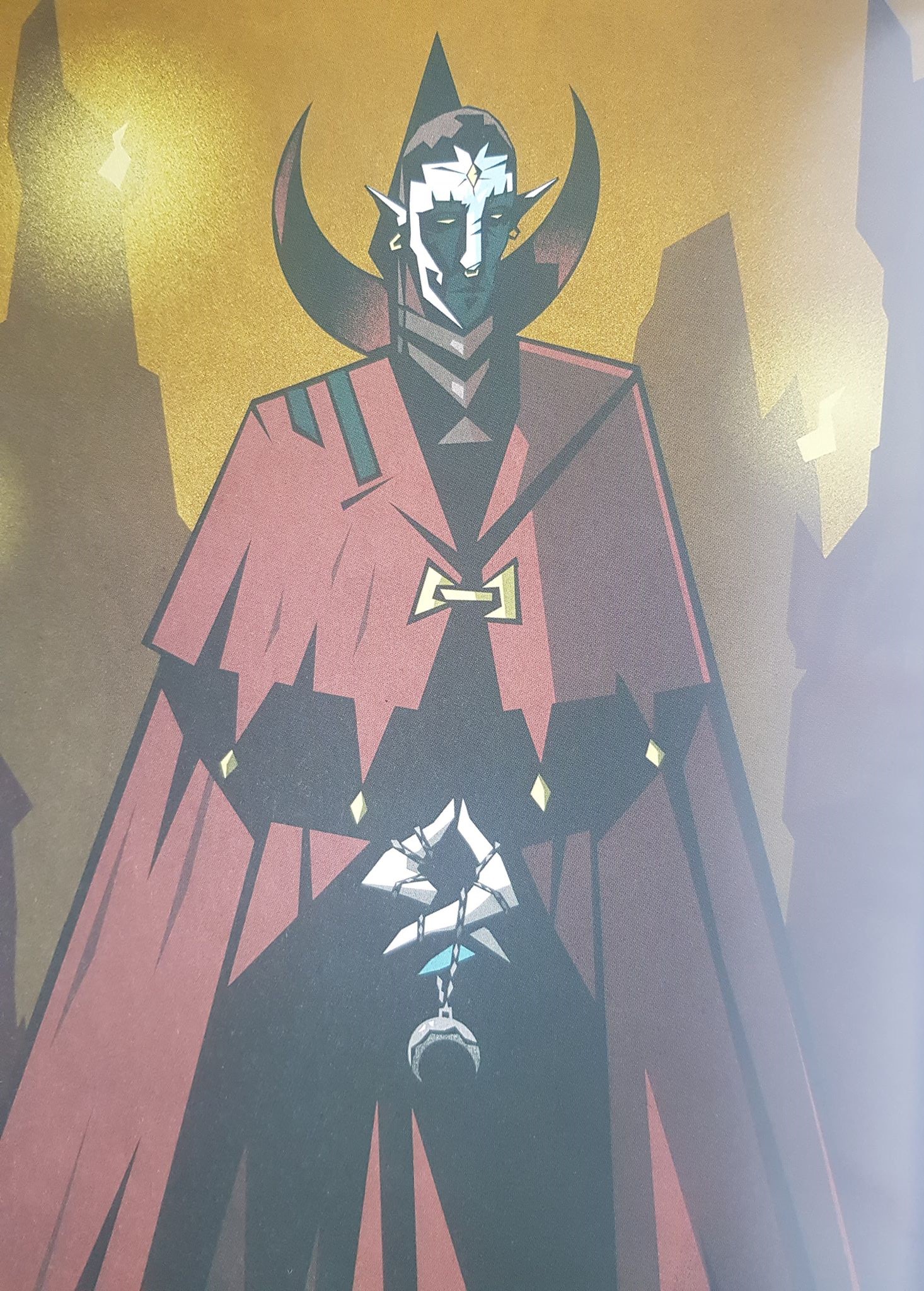

The Protagonists of the Revolt: The Oppressed
Although the choice to limit PC’s to only Dark Elves may seem contrived, the nature of the setting reveals the necessity. This RPG could not convey the same anger and the same of revolt if it were not framed entirely from the point of view of the oppressed of Spire. All this has a strong impact also on character generation.
The first aspect to be determined in character creation is the Bond, which defines how each character served the High Elf society before they decided to rebel.
The second aspect to be determined is in fact the Bond, that is, how each character served the High Elf society before rebelling. There are many options (Adept, Assistant, Manual worker, Guard, etc.), and each provides its own mechanical advantages.
For the second you must select the Class, the professional specialization. These deviate quite a bit from the classic fantasy classes (Azurite, Heretic, Idol,…), giving the work a remarkable originality. They also bring particular advantages, classified as Main Traits (Resistances, Recovery, Skills, Domains, Alliances), Equipment, Proficiency and Advances. The latter represent the advantages derived from one’s actions and replace the classic accumulation of experience. Changing the city more or less incisively guarantees Basic, Moderate or High Advances. If desired, you can also buy Advances from other classes, but they are counted as belonging to a higher category. There are Advances available for all classes, Extra Advances.
At the back of the manual there is a blank, simple and a little generic, but functional character sheet. Alternately, you can download the editable character sheet (in Italian) directly from the Isola Illyon Edizioni website.
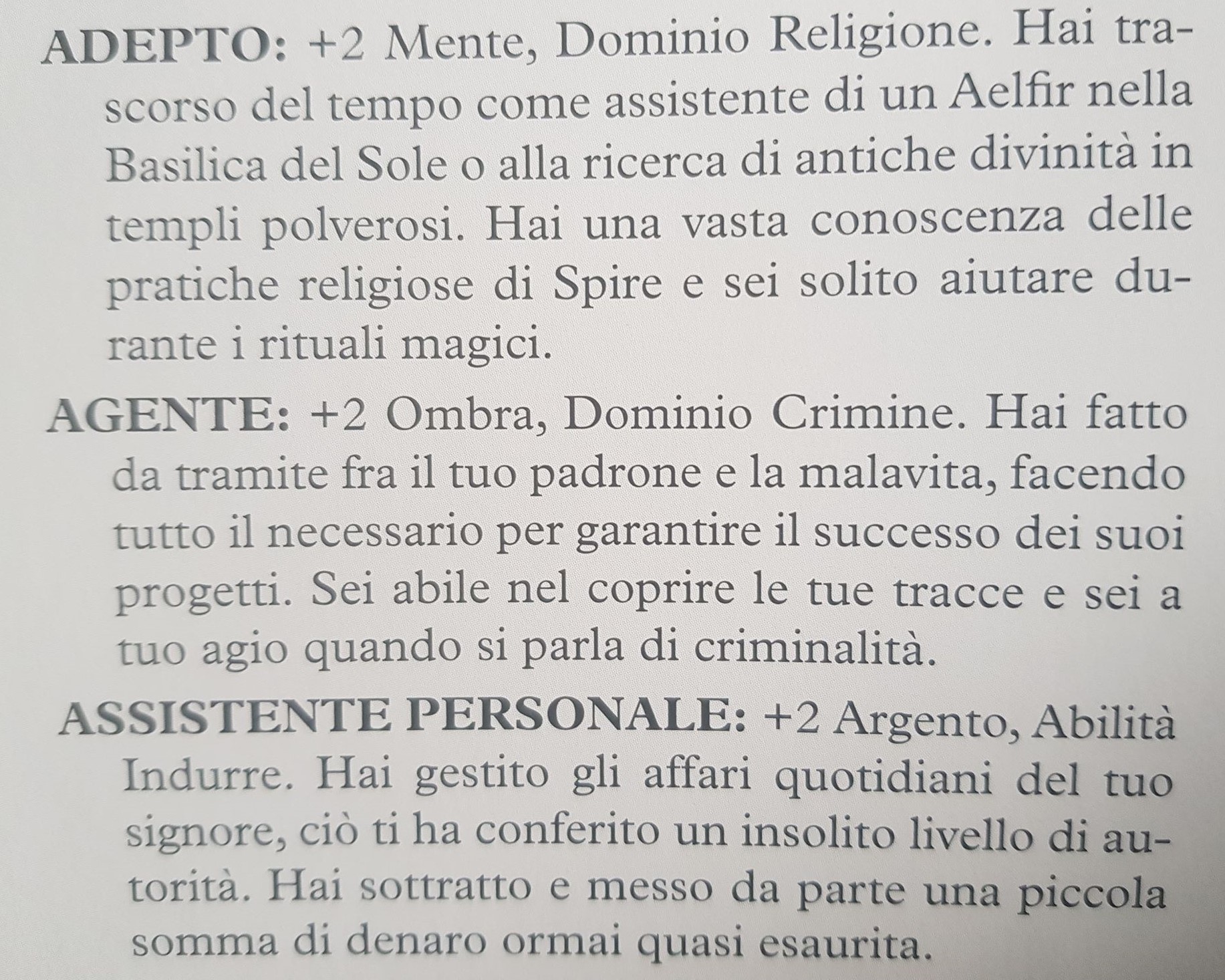



But now let’s take a look at the terms that define the characters.
How to Move the Threads in These Shadows
Let’s start from the basics: each resolution check is based on the roll of a d10 and the result looked up on a simple table that shows how this can lead to successes or failures with extra implications. If the test concerns an activity or an area in which the character is specialized, he can use an Ability or a Domain respectively. No more than one per category may be applied and each of them adds an additional d10. There is also the possibility of taking the same Ability or the same Domain twice, in order to unlock a Talent; it allows a Roll with Mastery, which gets the best results. There could be two external factors: the help of an ally to gain another d10 or the danger generated by a difficulty, which instead takes away a d10.
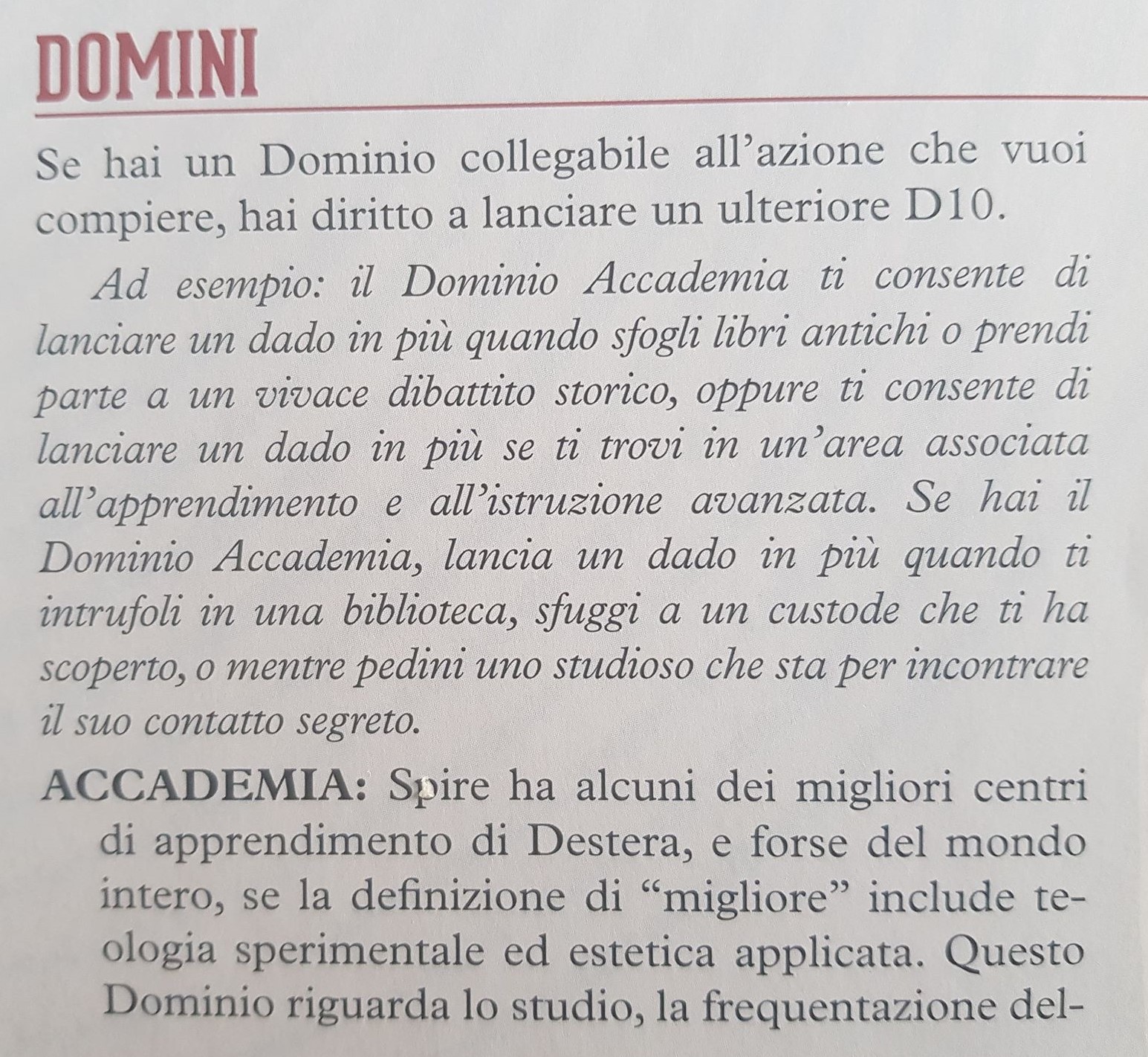
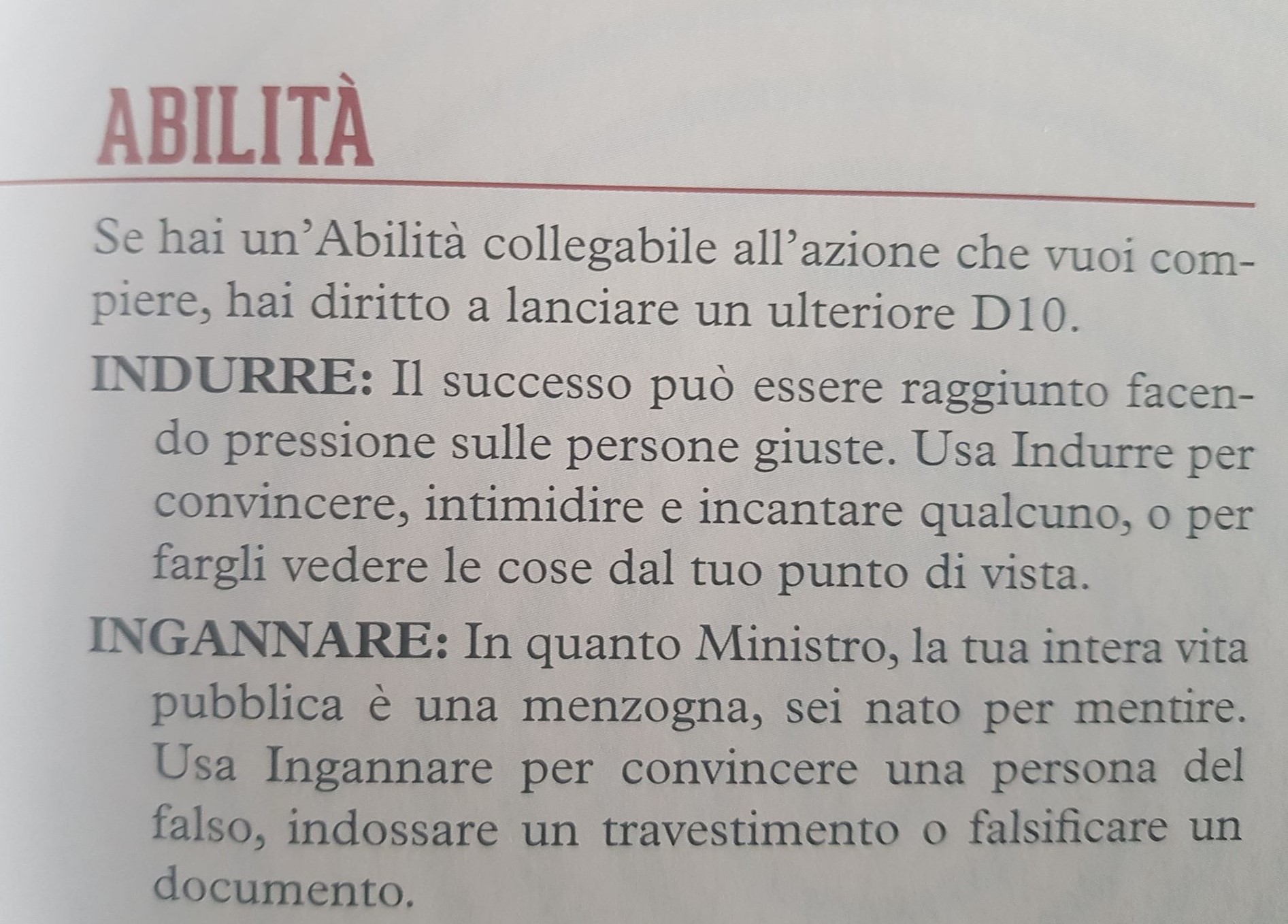
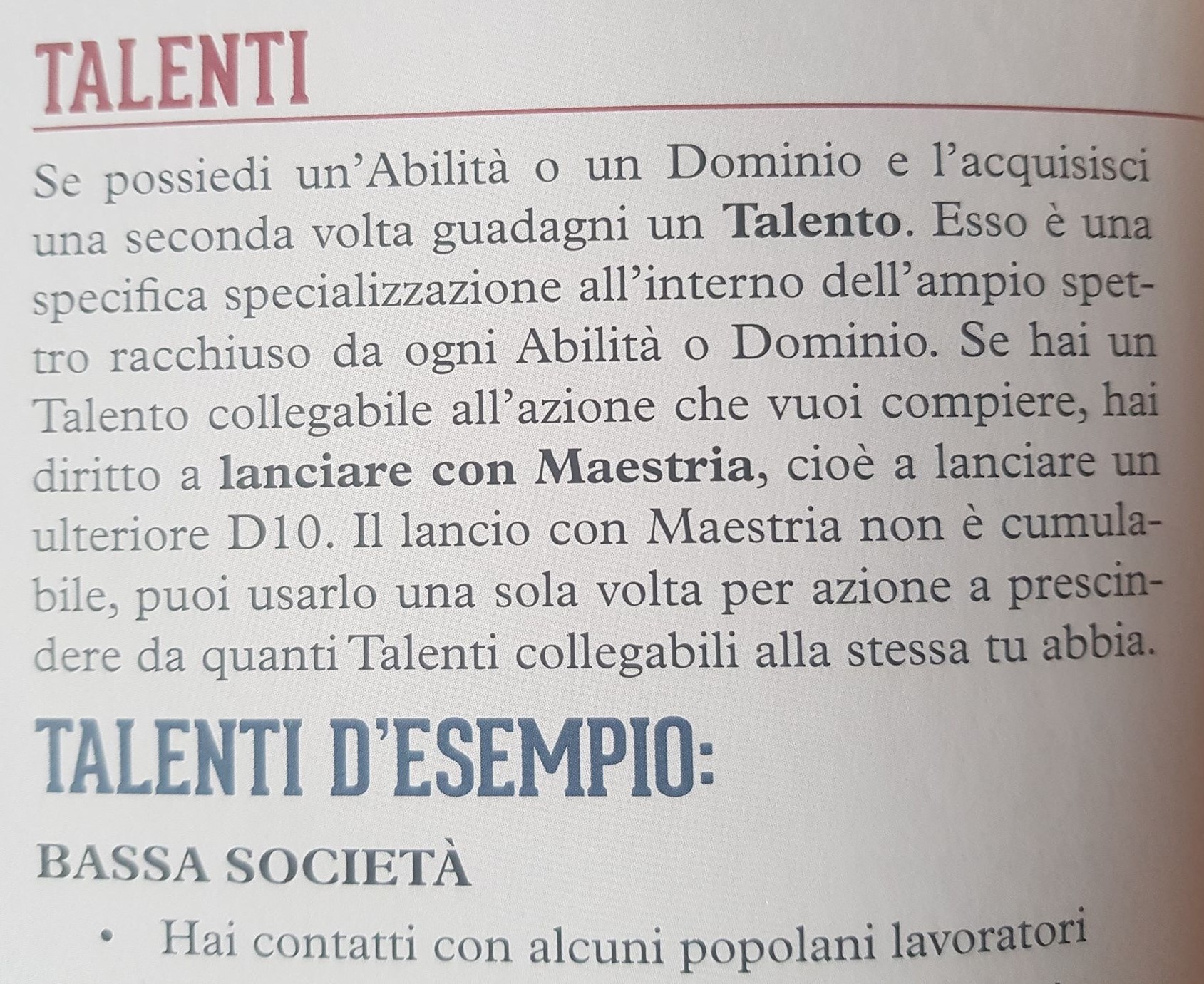
Failure (or just enough success) brings the Stress mechanic into play. It is, in simple terms, a type of damage. It should not be applied to generic “life points”, but to five specific statistics: Resistances: Silver, Mind, Shadow, Reputation, and Blood. Continuing to act despite Stress is possible, but it carries ever higher Complication risks. Complications are path accidents, losses from various points of view or real accidents (up to the departure of the character). To recover, there are specific actions or complete rest. The latter is accessible to everyone, but has the inevitable drawback of making the plot proceed without being able to intervene.

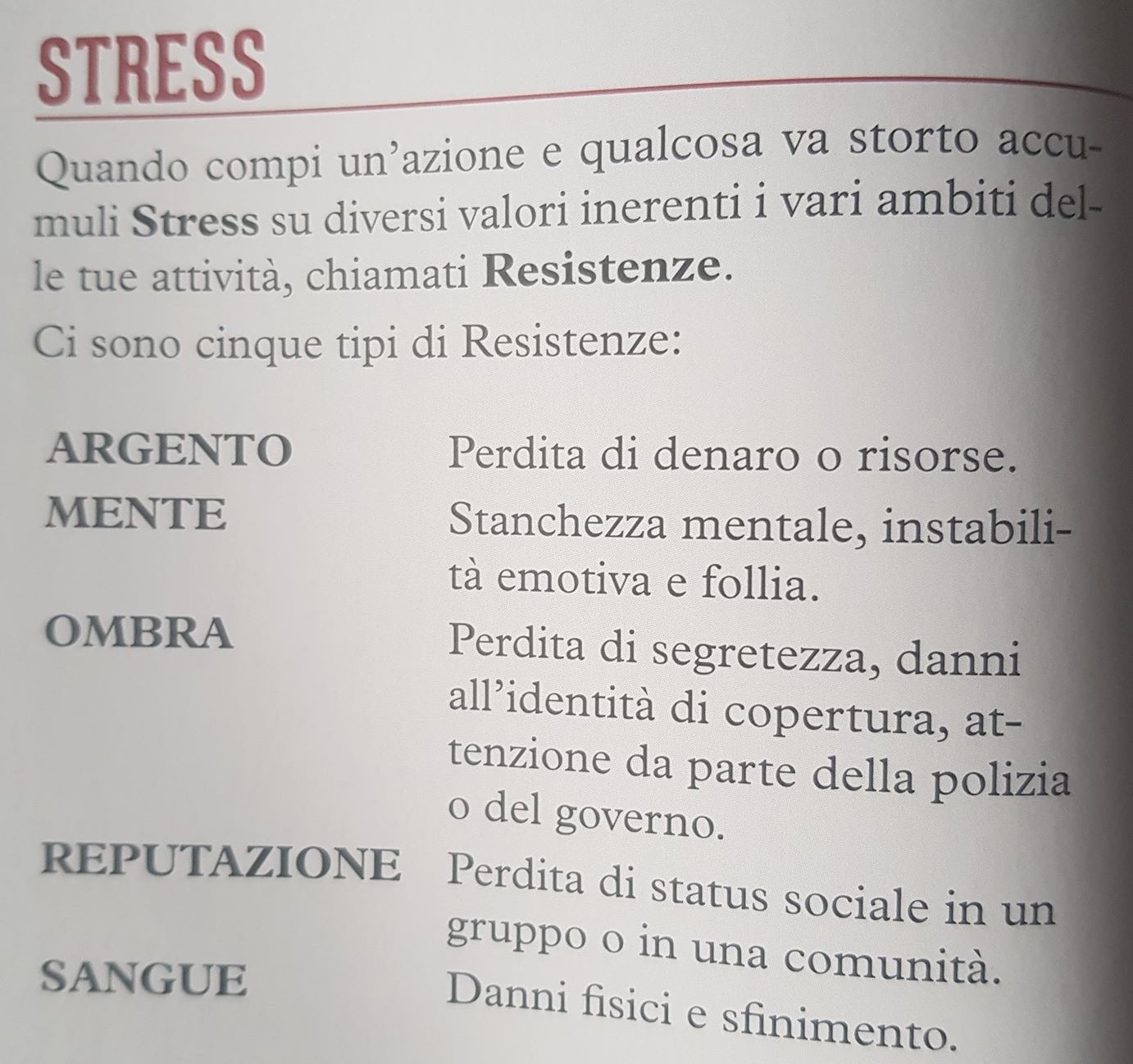
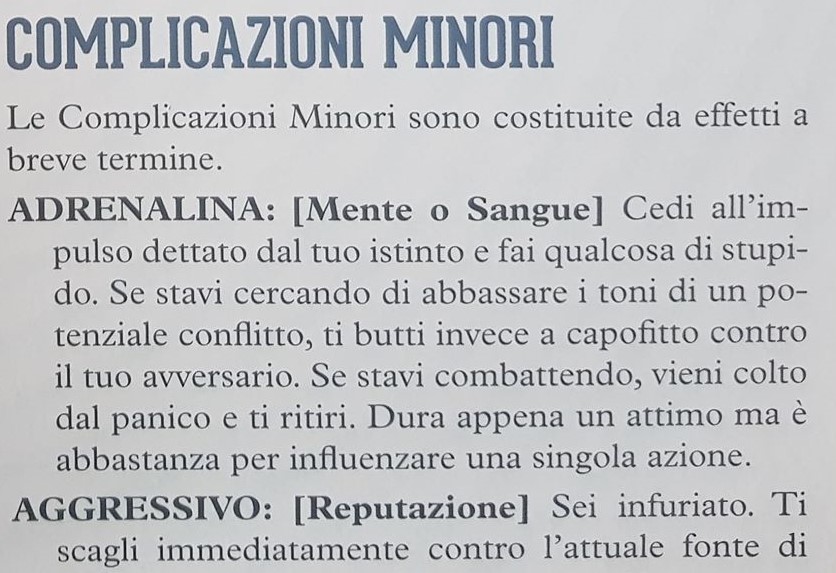
Not Everything is Resolved with Diplomacy
This review has so far painted Spire: The City Must Fall as a dark but almost non-violent game. Fear not: it is not so. But don’t expect a battle map or something equally detailed. Combat does not betray the narrative soul of the title and results in dynamic and flowing scenes. There are no Initiatives; the master decides who acts and the characters describe their actions, matching the appropriate dice rolls. The enemies are not proactive, but the negative consequences of the players’ eventual unfortunate rolls represent the counter-moves of the antagonists. You don’t need a battle map because all distances are divided into only increments: melee, distance and long distance.
Before facing a battle it is good to find the right equipment, but the currency of exchange is Stress. Costs are reckoned as Stress to one’s Silver. The advantage of having armor? Increased Blood Resistance. The effects of weapons? Blood Stress to the target. The weapons also have interesting extra skills (block, stun, concealable,…) that can often be applied together with some character Domains or Skills. Aside from these two categories, there are no real lists of purchasable items. There are only a few examples in the initial equipment of the classes and in some final random generation tables; the rest is left to free interpretation of the master. Obviously to be purchased in exchange for Silver Stress.

Review of the Physical Material of Spire
In regards to the materials used for this version of the manual, there isn’t much to criticize. Its approximately 220 pages are of excellent quality and are very well protected by a very smooth hard cover. Nice to look at, nice to consult. Navigating through its contents is made comfortable by a classic double column layout and the simple and clear font. At the end of the manual there is also a handy index to find the chapters, already rationally divided.
The manual is studded with incredibly beautiful illustrations. Consistency in style is impeccable, the effect is powerful. Thick black lines delimit each figure. Powerful colors give meaning to each illustration. Even just flipping through the pages makes you feel the atmosphere that the game wants to convey. Few times I have seen such a particular setting supported by equally particular but at the same time coherent series’ of illustrations. If I had to make a game comparison, it reminds me a lot of the graphic style of the Darkest Dungeon video game.

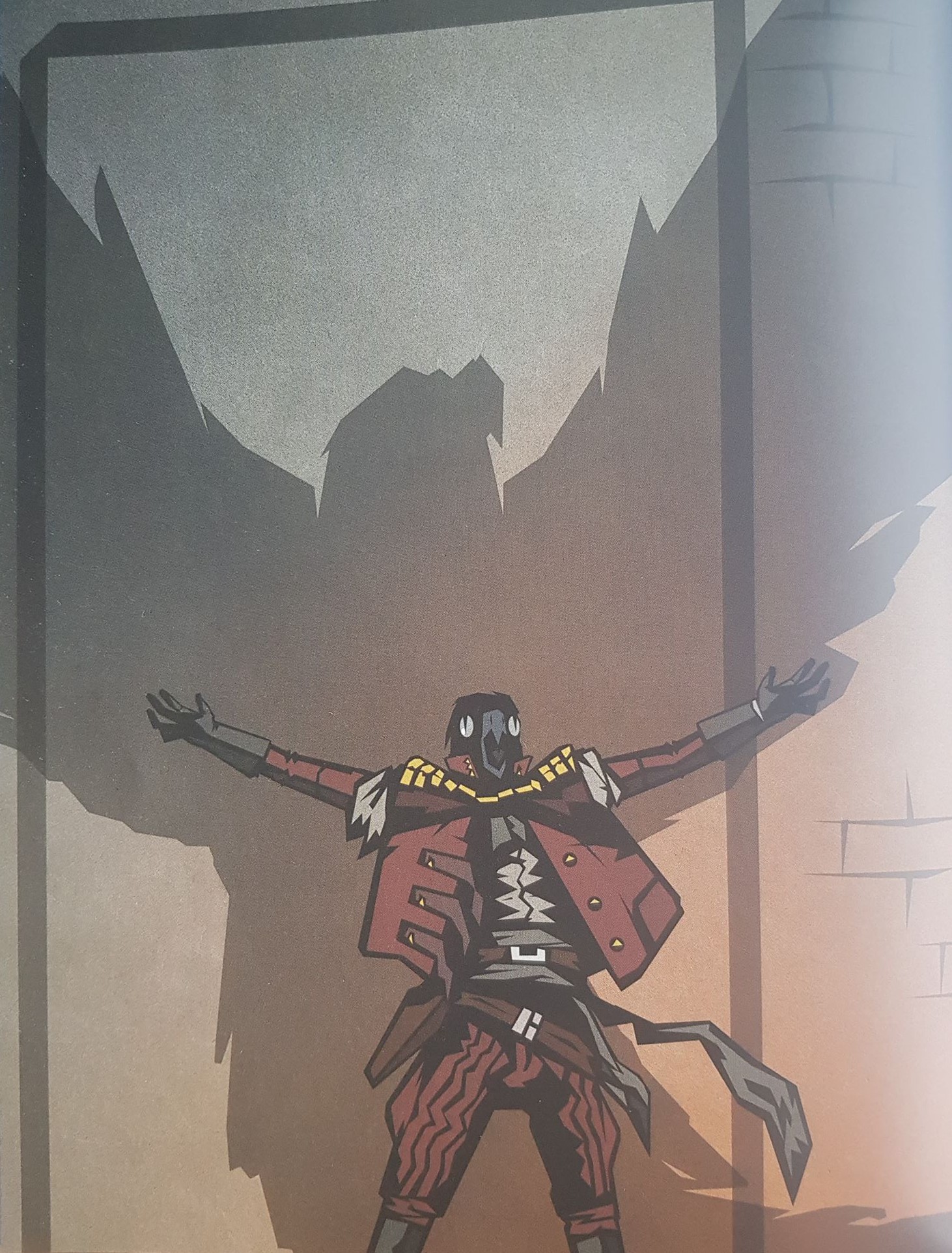

Final Thoughts for the Spire Review
The manual also contains various useful tips for the master and for the players, aimed at making the game experience simpler and more enjoyable, always in line with the base tenets, i.e., the revolt against oppression. The support of the project patrons and their trust are also publicly thanked in the manual. For me it means a lot to see that the authors wanted to repay this investment by citing the names of the backers. One of the last pages presents works that inspired this RPG; music, film, books, etc. There are many sources and they could also be useful to better understand the setting atmosphere.
I want to close this review of Spire: The City Must Fall with a thought for the sensations it can evoke. The attention to detail relating to the setting is incredible; reading the manual is like having a sightseeing tour of disturbingly beautiful Spire. Of course, one should not expect complicated mechanics (after all it is a narrative system that is mainly based on the use of the only d10). But if you like narrative role-playing games, I can advise you to give it a chance. The mix of classic and innovative elements is perfectly balanced; much more might be said, but you will probably find the atmosphere it creates really fascinating.



Trackbacks/Pingbacks